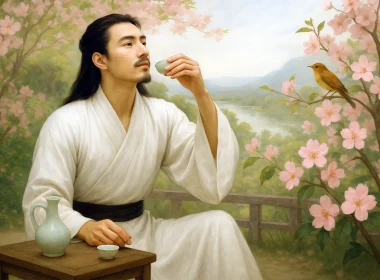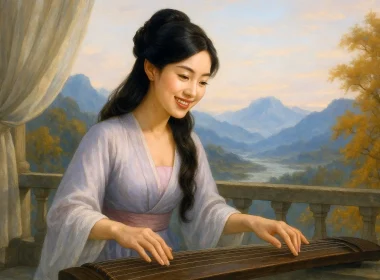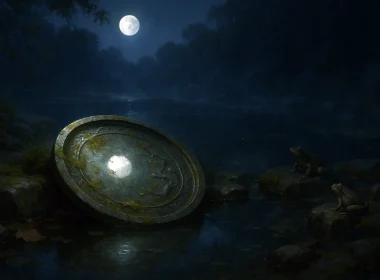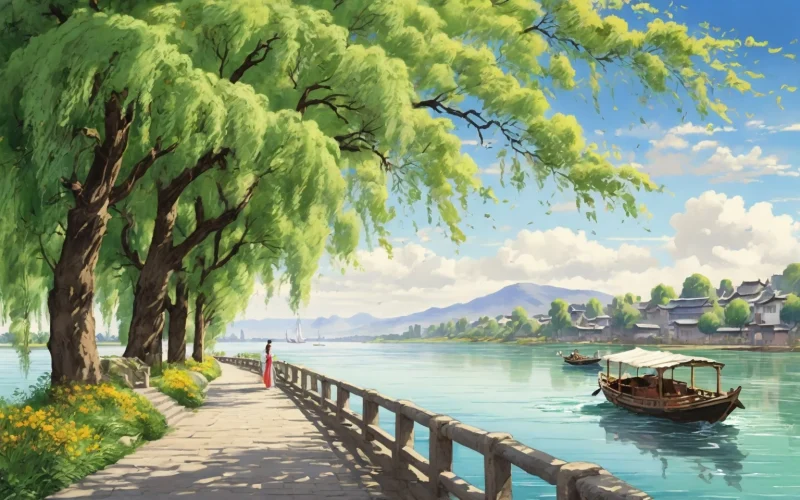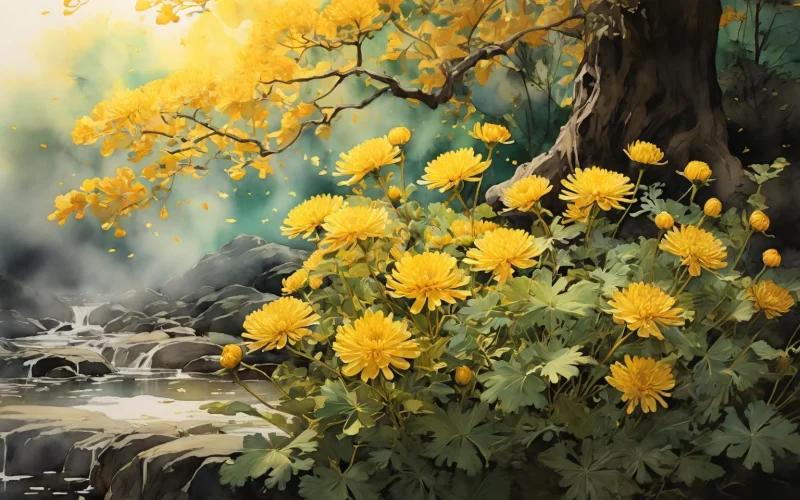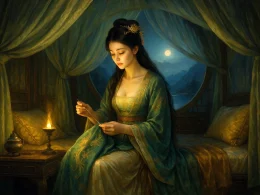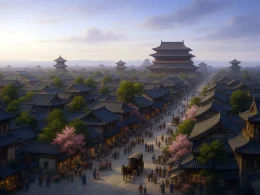By riverside you see lovers part on fine day;
They cling together but they cannot make spring stay.
Your catkins waft in the breeze when your branches sway,
Could you retain those who are going far away?
Original Poem
「柳二首 · 其一」
罗隐
灞岸晴来送别频,相偎相依不胜春。
自家飞絮犹无定,争解垂丝绊路人?
Interpretation
Though ostensibly a willow poem, this work uses catkins and pendulous branches to mirror courtesans' complex psychology in farewell scenes. Luo Yin masterfully blends natural imagery with human affairs, merging women's rootless fate and unanchored emotions with spring scenery to create a unique poetic realm where "parting" and "courtesan" motifs become one. The layered progression of meaning fuses emotion with landscape, embodying humanity through flora, demonstrating profound compassion and allegorical depth.
First Couplet: "灞岸晴来送别频,相偎相依不胜春。"
Bà àn qíng lái sòngbié pín, xiāng wēi xiāng yī bùshèng chūn.
Sunny Ba River banks witness endless partings; clinging couples overwhelm even spring's vitality.
This couplet paints a farewell scene. The Ba River's cultural association with parting enhances the melancholy, while "endless partings" suggests cyclical heartbreak. "Clinging couples" describes both lovers' embraces and willow branches' interlacing forms - a tender yet sorrowful fusion of human emotion and botanical imagery.
Second Couplet: "自家飞絮犹无定,争解垂丝绊路人?"
Zìjiā fēixù yóu wúdìng, zhēng jiě chuísī bàn lùrén?
When even your own catkins drift rootlessly, how could your dangling strands ensnare passersby?
Shifting to philosophical inquiry, the floating catkins symbolize courtesans' unstable existence. The rhetorical question - whether these "dangling strands" intentionally trap men or simply reflect helplessness - invites multilayered interpretation about agency versus circumstance in marginalized lives, leaving profound space for reflection.
Holistic Appreciation
This willow poem transcends botanical observation to meditate on courtesans' plight. Traditional imagery - the Ba River, spring light, drooping branches, floating catkins - becomes symbolic of human conditions through deft wordplay. The first half depicts tender scenes; the second poses piercing questions. Both the sorrow of spring partings and women's lack of autonomy dissolve into the image of drifting catkins. Gentle yet sharp, sentimental yet critically reflective, the poem demonstrates the poet's insightful compassion for society's marginalized.
Artistic Merits
- Anthropomorphic botany: Willow traits mirror courtesans' emotional and social states
- Layered symbolism: Natural phenomena double as psychological landscapes
- Strategic interrogation: The rhetorical question amplifies thematic complexity without explicit judgment
- Societal critique: Subtly questions the "frequent parting" culture while empathizing with women's powerlessness
Insights
The poem invites contemplation beyond spring scenery or parting sorrow - it probes deeper questions about human nature, fate, and social standing. These seemingly delicate willow catkins bear the weight of existential displacement, reminding us that behind beauty and romance often lie rootlessness and helplessness. The poet neither simplistically pities nor condemns, but through symbolic richness presents nuanced understanding. This challenges us to perceive the hidden struggles beneath surface elegance, maintaining compassion for the vulnerable while critically examining societal structures that create such fragility.
Poem translator:
Xu Yuanchong (许渊冲)
About the poet:

Luo Yin (罗隐), 833 - 909 AD, was a poet of the Tang Dynasty, a native of Hangzhou. His poems have the spirit of entering the world by facing the reality and life directly, bravely fighting against the darkness of the society with his poetic pen, attacking the bad government of the society, reflecting the hardship of the people in the society and expressing his personal hardships.


